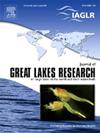A comparison of phytoplankton development in Lake Baikal, Siberia, and Rybinsk Reservoir, Volga River, European Russia, using stability indices
IF 2.5
3区 环境科学与生态学
Q3 ENVIRONMENTAL SCIENCES
引用次数: 0
Abstract
Based on observations of 2009–2022, the state of phytoplankton and its main taxa was analyzed in Lake Baikal (Siberia, Russia) and Rybinsk Reservoir (European Russia), two large freshwater lake reservoirs. Data were collected during periods of phytoplankton seasonal maxima which determine the total level of their annual production. The development of phytoplankton was assessed by biomass expressed in units of wet weight for Lake Baikal and units of chlorophyll a for the Rybinsk Reservoir. To assess the sustainability of biomass, its coefficients of variation, deviation from the mean value, and population stability index were calculated. These metrics did not reveal any definite inter-annual trends in the state of phytoplankton, but showed sharp changes in the level of community resistance in years with different trophic state. In both water bodies, a decrease in stability was observed under conditions atypical for the ecosystem. In the oligotrophic Lake Baikal, the most unstable situation was noted in highly productive years with the mass development of diatoms in the spring plankton. In the moderately eutrophic Rybinsk Reservoir, its resistance decreased in low productivity years with a weak summer development of phytoplankton and cyanobacteria due to the unfavorable weather conditions. The proposed approach will be of interest for assessing the stability of other aquatic ecosystems.
利用稳定性指数比较西伯利亚贝加尔湖与俄罗斯欧洲伏尔加河雷宾斯克水库浮游植物发育
基于2009-2022年的观测资料,对俄罗斯西伯利亚贝加尔湖和俄罗斯欧洲区雷宾斯克水库两个大型淡水湖的浮游植物及其主要类群进行了分析。数据是在浮游植物的季节高峰期间收集的,这决定了它们的年生产总量。以贝加尔湖的湿重单位生物量和雷宾斯克水库的叶绿素a单位生物量来评价浮游植物的发育。为了评估生物量的可持续性,计算了其变异系数、均值偏差和种群稳定指数。这些指标并没有显示出浮游植物状态的年际变化趋势,但在不同营养状态的年份中,浮游植物的群落抗性水平有明显的变化。在这两个水体中,在非典型的生态系统条件下,稳定性都有所下降。在低营养贝加尔湖,最不稳定的情况出现在高产年份,春季浮游生物中硅藻大量发育。在中等富营养化的雷宾斯克水库,由于气候条件不利,其抗性在低生产力年份下降,浮游植物和蓝藻的夏季发育较弱。所提出的方法将有助于评估其他水生生态系统的稳定性。
本文章由计算机程序翻译,如有差异,请以英文原文为准。
求助全文
约1分钟内获得全文
求助全文
来源期刊

Journal of Great Lakes Research
生物-海洋与淡水生物学
CiteScore
5.10
自引率
13.60%
发文量
178
审稿时长
6 months
期刊介绍:
Published six times per year, the Journal of Great Lakes Research is multidisciplinary in its coverage, publishing manuscripts on a wide range of theoretical and applied topics in the natural science fields of biology, chemistry, physics, geology, as well as social sciences of the large lakes of the world and their watersheds. Large lakes generally are considered as those lakes which have a mean surface area of >500 km2 (see Herdendorf, C.E. 1982. Large lakes of the world. J. Great Lakes Res. 8:379-412, for examples), although smaller lakes may be considered, especially if they are very deep. We also welcome contributions on saline lakes and research on estuarine waters where the results have application to large lakes.
 求助内容:
求助内容: 应助结果提醒方式:
应助结果提醒方式:


